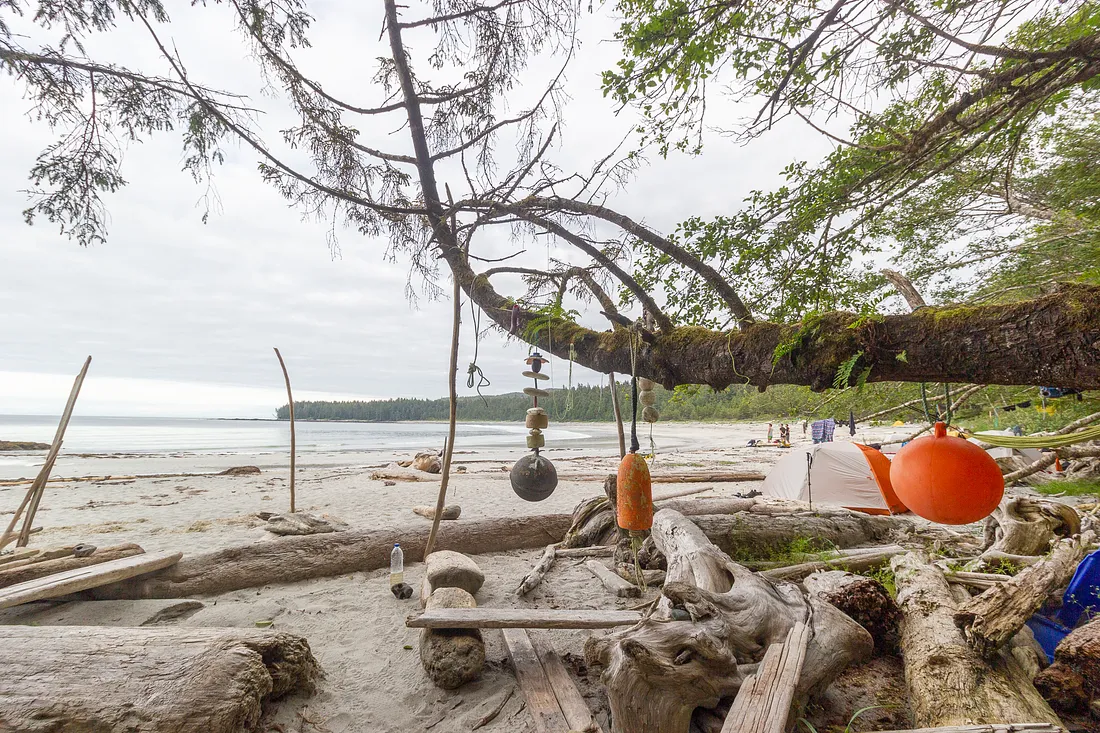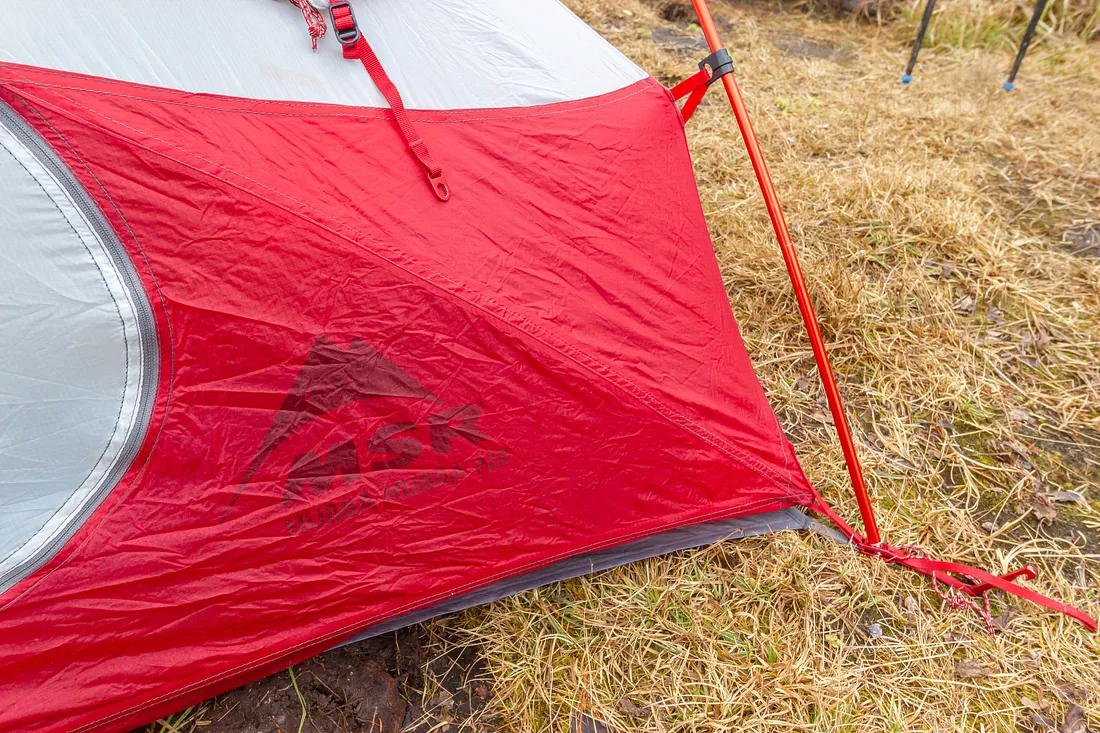Quick heads-up: some of the links on this page are affiliate links. If you make a purchase through them, we may earn a small commission (at no extra cost to you). This small bit of income helps keep our site running.
What is a Tent Footprint, and Do You Really Need One

You've probably seen them at your local camping store. Maybe your tent even came with one. So what exactly is that tent footprint, and will your tent survive if you leave it at home? Let's find out.
Breaking It Down: Tent Footprints Explained
A tent footprint is a groundsheet specifically designed to go underneath your tent. Think of it like a protective layer between your tent's floor and the ground.
Abrasion and Punctures
The big benefit that a tent footprint provides is that it's a barrier against abrasion and punctures. When you set up your tent, the floor can be damaged by a variety of things on the ground:
- Sharp Objects: Rocks, twigs, pine cones, and even shards of glass in less pristine camping spots can create tears in your tent floor. Most tent floors are sturdy, but everything has it's limit.
- Rough Terrain: Setting up on uneven ground without a footprint means the fabric stretches and wears out over areas that protrude more, like small rocks or roots. This might not result in a tear, but over time it will weaken the tent floor material.
So a footprint basically acts as a sacrificial layer, taking the brunt of these harsh ground conditions so your tent floor doesn't have to.
Moisture
Moisture from the ground is another enemy of a comfortable camping experience and a good sleep. Even if the weather is clear, ground moisture can seep through the tent floor, getting you and your gear wet. Here’s how a tent footprint can help:
- Water Barrier: It serves as another layer of water resistance, helping to keep the bottom of your tent dry. This is particularly important in damp or rainy conditions, where the ground can become saturated, or you can go to sleep with a dry campsite and wake up in a small puddle.
- Condensation: In colder weather, the difference in temperature between the inside and outside of the tent can cause condensation in your tent, and that includes on the tent floor. A footprint can help reduce this effect by adding another layer between the cold ground and your warm tent.
Insulation
While not its primary purpose, a footprint can also add a slight layer of insulation between the tent and the ground. The ground is actually quite cold at night, and you'll lose a lot of heat to it. One of the primary purposes of your sleeping pad is to insulate you from the cold ground. A tent footprint obviously isn't anywhere near as good as a sleeping pad, but it adds a little something.
Cleanliness
A footprint also helps keep your tent clean. The bottom of your tent can get covered in dirt, sand, mud, and whatever else is on the ground outside. A tent footprint is a lot easier to clean than the bottom of a tent is.

The Real Question: Is a Tent Footprint Necessary?
Alright, so do you need one? It depends. If you’re the type of outdoor enthusiast to camp occasionally in well-maintained sites, and you don’t mind buying a new tent every few years, maybe not. But if you're like me, frequently camping in all sorts of outdoor conditions, then a tent footprint is a smart investment.
How Big Should a Tent Footprint Be?
The ideal footprint size is one that matches the exact outline of your tent floor but is about 1 to 2 inches shorter around the edges. This ensures that:
- There is no water collection: If the footprint sticks out beyond the tent's edges, the water drips down the side of your tent, lands on the footprint, and pools underneath your tent. You definitely want to avoid this.
- There is full coverage: While the footprint should be slightly smaller, it needs to be close in size to your tent's dimensions to ensure that it adequately protects the entire tent floor.

Custom vs. Generic Footprints
- Custom Footprints: Many tent manufacturers offer footprints that are specifically designed to fit their tents. These are a no brainer because you know they're a perfect fit. They also often come with grommets or attachments that will integrate with your tent, to fully ensure that it stays in place.
- Generic Footprints: If a custom footprint isn't an option or you want something a bit more budget friendly, you can use a generic groundsheet or tarp. In this case, measure your tent’s dimensions and either order appropriately, or else order something a bit too big and then cut the footprint to fit.
Can I Use a Tarp as a Footprint?
The short answer: absolutely! We outlined some of the reasons for why you would want a tent footprint that is a close or exact match for the size of your tent, but if you have a tarp that is just the right size, or you don't mind dealing with a tarp that's a little too big (just fold it under your tent), then a tarp will work just fine.
The downside of any kind of generic tarp is that it's going to be a little bit bulky and heavy, relative to purpose made tent footprint. If you're car camping this isn't a big deal, but if you're backpacking it can make a big difference. Something to keep in mind.
Adjusting Size
If you end up with a footprint that's too big, you can fold the edges under to prevent water from pooling. However, this is not ideal, as the folded material can create uneven spots under the tent, and it's just more tent footprint that you have to haul around.
Product Spotlight
You want something durable, lightweight, and size-appropriate for your tent. Here are a couple of picks that I like:
- MSR Universal 2 Person Footprint: This is MSR's universal footprint that's made to fit all of their 2 person tents, but it will likely fit just about any 2 person tent. If in doubt, measure your tent and compare it to the footprint's specs.
- REI Footprints: If you're looking for the tent footprint that specifically goes with your tent, REI has a huge selection of tent footprints. As long as you have a tent from one of the larger manufacturers, REI probably has a tent footprint for you.
